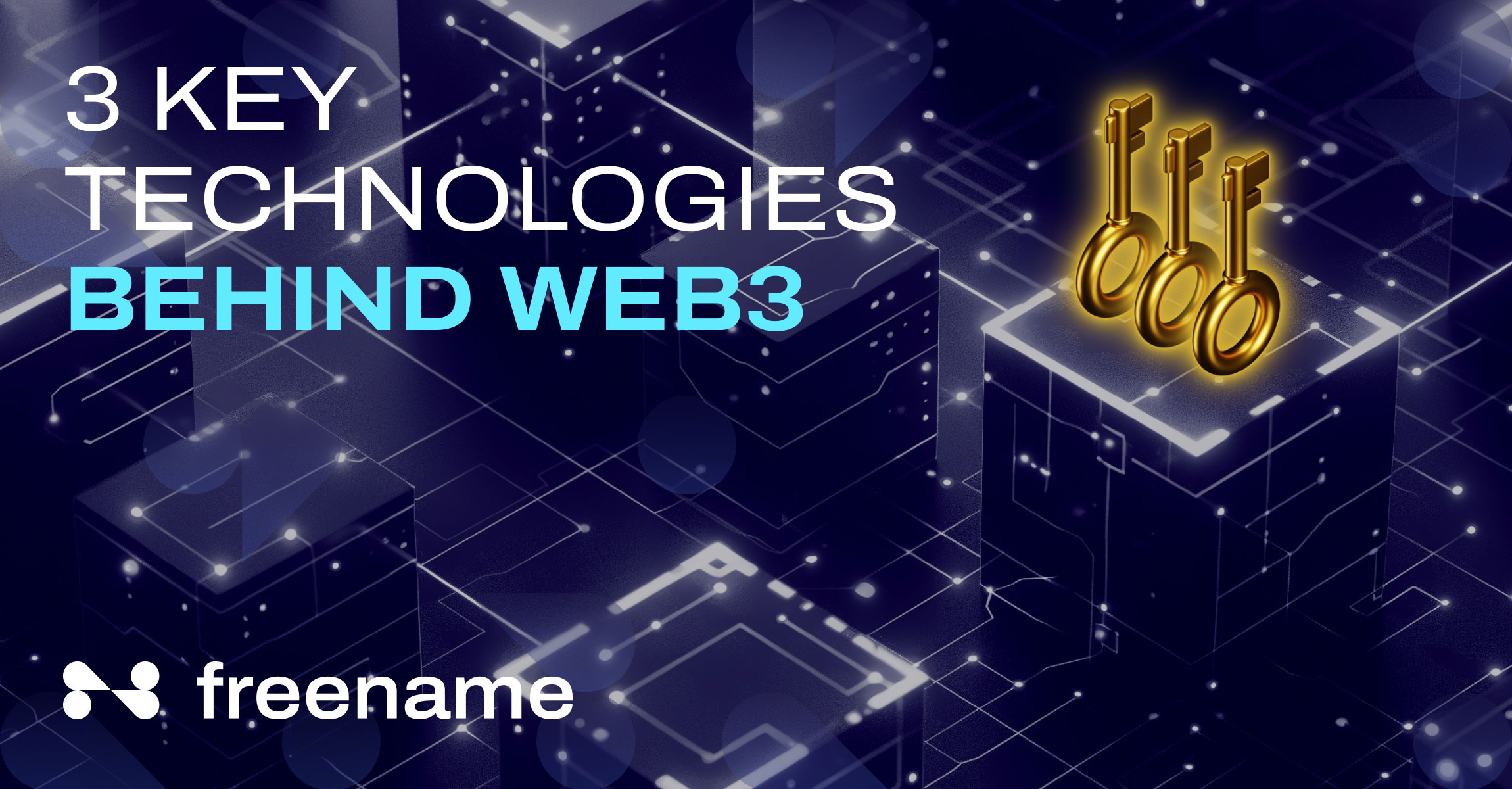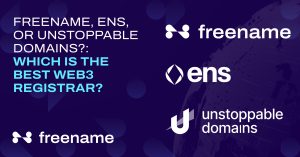The internet as we know it is transitioning from Web2 to Web3. This shift marks an important moment in its evolution, as it greatly benefits users globally. One of the main benefits is the transfer of power from centralized entities to decentralized ecosystems where users are in control. This changes the way we interact online by offering enhanced levels of security, privacy, and autonomy.
While we are at the edge of this transition, it is important to understand the core things that make Web3 possible. These technologies are the foundation for a new digital era that will transform communications, transactions, and online interactions.
This article explores the core technologies that power this new age of the Internet, including blockchain, cryptography, decentralized networks to see how they contribute to the functioning of the decentralized web. There are more technologies powering Web3 but we want to specifically focus on these three for now.
The Infrastructure of Web3
Web3 infrastructure is made up of three technologies: blockchain, Cryptography, and Decentralized Networks, all of which play important roles in bringing the digital age to life and helping users interact with enhanced security, autonomy, and efficiency. Together, these three technologies (blockchain, cryptography, and decentralized protocols) form the backbone of Web3, promising an internet that returns control to the users.
Blockchain Technology: Web3’s Backbone
It wouldn’t be an exaggeration to say that Web3 wouldn’t be possible without blockchain. Often referred to as the cornerstone of Web3, blockchain is a distributed ledger that contains a record of transactions across a network of computers rather than sticking to one centralized server. For users, this guarantees that the information in the database can’t be changed, and thus can be trusted by all parties.
For this reason, it’s possible to maintain Web3’s decentralized network
Here’s an exploration of why blockchain is fundamental to the functioning of Web3:
- Decentralization: As discussed, blockchain works without any central authority, with every node within the network able to participate. The decentralization of the data is the most fundamental aspect of Web3.
- Transparency: Web3 is a trustless environment. Blockchain removes the need for trust, as all the transactions recorded on the blockchain are public and visible to all participants.
- Immutability: Once a transaction is recorded on a blockchain, it cannot be changed. For users, this means that transactions can be carried out without fear of the records being changed fraudulently. This is a useful feature for Web3 apps (or dApps) that require transparent transaction histories, identity verification, voting systems, etc.
- Smart Contracts: Blockchain enables the deployment of smart contracts, which execute automatically once the agreement rules are met. These are essential for the decentralized web to function independently.
- Tokenization: One of the popular applications of blockchain technology is cryptocurrency and asset tokenization. With it, real-world assets can be transformed into digital tokens, opening up possibilities for ownership, trade, and investment in the Web3 world.
- Interoperability: Blockchain’s interoperability allows different networks to communicate and share information seamlessly.
Cryptography: The Security Layer
Cryptography is the essential security layer behind Web3. It’s made up of complex mathematical algorithms that protect data and ensure that it can be safely shared over the network. Cryptographic techniques like public-key cryptography and hashing protect users’ identities and the integrity of transactions. With cryptography, no one except the intended recipients can decrypt and access the information sent, thereby safeguarding against unauthorized access and tampering.
Here’s a detailed look at why cryptography is important for Web3:
- Data Security: It is essential because it locks down our digital info on Web3, much like a vault. This way, hackers are kept out, and only those meant to see the data can get access to it.
- Identity Verification: This property is key to Web3 as it lets us prove who we are on the decentralized web securely without oversharing personal details.
- Trustless Transactions: Cryptography is what makes trustless transactions possible- safely carrying out dealings directly with a third party without a third party intermediary, such as a Central Bank.
- Public and Private Keys: They’re the core of Web3 security, acting like a secure mailbox for our digital assets that only we have the key to open, safeguarding ownership and transactions.
- Secure Communication Channels: Cryptographic techniques are the key to the secure communication lines in Web3 innovations, protecting messages and transactions from being intercepted by unwanted parties.
- Protection Against Quantum Attacks: Cryptography also helps networks more capable of resisting quantum computing attacks.
Decentralized Networks and Protocols: Facilitating a Distributed Internet
Decentralized networks and protocols are the reason we can imagine and actualize this new generation of internet- one without centralized servers, and one where the data is distributed among all the participating nodes. Because of this, it’s much harder to tamper with information. Even if there’s a network failure at a point, the effects won’t be widespread.
These networks operate on consensus mechanisms that ensure every participant verifies new transactions before they are added to the digital ledger. For instance, protocols such as IPFS (InterPlanetary File System) aim to replace centralized web servers with a peer-to-peer network, making the web more accessible and resistant to censorship.
These are the decentralized networks’ features that are essential for Web3 to function smoothly:
- Peer-to-Peer Architecture: This setup avoids a single point of failure by allowing everyone in the network to access data anytime, making the web more reliable and hard to shut down.
- Enhanced Security: When it comes to data security, the wiser approach is to store it across multiple data centers rather than a centralized one. This is exactly what decentralized protocols do- making stealing or corrupting data much harder and offering a safer space for everyone’s digital lives.
- Data Sovereignty: It’s like keeping the keys to your personal diary, ensuring only you decide who reads it. For Web3, this means users truly own their data, making personal information safer and more private.
- Consensus Mechanisms: Consensus is akin to having a group agreement on the truth without needing a boss to decide. In Web3, they help ensure everyone plays by the rules, creating a fair and transparent environment.
- Censorship Resistance: This feature of decentralized protocols keeps Web3 open and accessible, letting ideas flow freely without anyone controlling or restricting them.
Freename: Simplifying Web3 for Everyday Users
Our efforts at Freename are directly contributing to making this new-age internet more accessible. By focusing on simplifying the user experience within the Web3 world, we’re breaking down the barriers that might otherwise prevent widespread adoption.
We specialize in Web3 domains and top-level domains (TLDs), making it easy to navigate the new, decentralized Internet. By enabling users to own Web3 domains, Freename makes it easier for individuals and businesses to secure a presence in the decentralized web. Apart from being digital addresses, these domains serve as a gateway to various Web3 utilities, such as seamless internet navigation, secure Web3 email sending and receiving, and effortless login to decentralized applications.
Freename is democratizing access to the Web3 space, ensuring users can leverage the full potential of the decentralized web with convenience and ease. And you, too, can be a part of this process.
Web3 Technology FAQs
What technologies are powering Web3?
Web3 is built on a combination of transformative technologies, including:
- Blockchain: A decentralized ledger for transparent and secure data storage.
- Cryptocurrencies and Digital Assets: Enable digital value exchange.
- Smart Contracts: Automate agreements with code on blockchain platforms.
- Decentralized Applications (DApps): Operate on peer-to-peer networks, avoiding central control.
- Decentralized Autonomous Organizations (DAOs): Governed by members, not central authorities.
- Tokenization: Converts rights to assets into digital tokens on a blockchain.
- Interoperability Protocols: Allow different blockchain networks to communicate.
What are the main features of Web3?
Web3 is characterized by:
- Decentralization: Distribution of data across a network rather than centralized control.
- Trustlessness: Interactions without the need for a central authority.
- Permissionless: Open access for anyone to participate.
- Native Payments: Incorporates cryptocurrencies for transactions.
- User Sovereignty: Users have control over their data and identities.
What is the technology behind blockchain?
Blockchain technology is a distributed ledger that records transactions across many computers. This ensures that records cannot be altered retroactively without altering all subsequent blocks and the network’s consensus. It uses cryptographic hashes, making it secure and immutable.
Is Web3 an emerging technology?
Yes, Web3 is considered an emerging technology. It’s in the early stages of development and adoption, focusing on decentralization, security, and user sovereignty. While foundational technologies like blockchain have been around, the broader application and acceptance of Web3 principles are still evolving, indicating its status as a growing and influential field.







